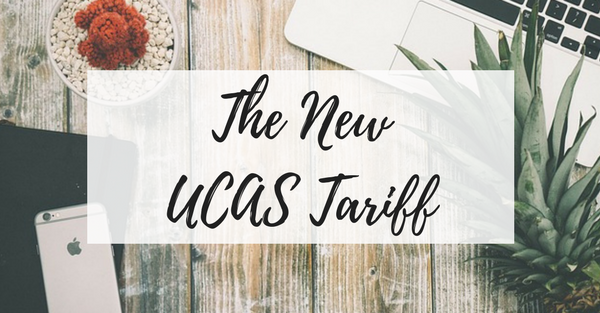The UCAS Points system is changing and there are a few important things you need to know…
The UCAS Tariff (previously known as the UCAS Points system) is used by universities and colleges to compare different qualifications, as a means of calculating whether applying students satisfy the entry requirements to secure a place on a particular university course.
Students receive UCAS Points when they successfully achieve a qualification such as an A-Level. The number of UCAS Points received is entirely dependent on the actual grade that is achieved.
Most universities use the UCAS Tariff in order to decide which applicants are offered a place in the university. However, there are still some universities who don’t use the UCAS Tariff, as it’s not compulsory for them to do so. Nevertheless, you will find that most do, so it’s important to be clued up on what they are, why they matter, and any changes that are made to the system – especially if you are thinking of applying to university from 2016.
In this post, we’re going to run through some of the most important things you need to know about the new UCAS Tariff – as it could affect your university application.
1. Why is it changing?
The UCAS Points system is undergoing necessary changes for a number of reasons.
The main reason is because many qualifications cannot be accommodated within the current system, so it is undergoing changes to include more. There is a significant increase in students taking vocational qualifications such as BTECs, therefore it is hoped that the new Tariff will be fairer and more accommodating for all types of qualifications.
The new system also changes how UCAS Points are calculated and attributed value, as well as including a different set of numbers. This is all to create a more efficient system.
2. How is it changing?
An important point to note is that the new Tariff uses a different set of numbers than previous. For example, an A-Level grade A* gets 56 UCAS Points under the new Tariff, whereas before it got 140. The value remains the same, but the numbers will be lower. Though on the whole, you will still need to achieve the same grades.
As mentioned before, the way that UCAS Points are calculated and attributed value will be undergoing a change. Under the old system, is was quite complex and vague on how qualifications were actually attributed value. Under the new system, it’s much clearer.
UCAS Points are now calculated by multiplying size bands and grade bands.
Size bands are allocated 1 to 4, based on the specific qualification’s guided learning hours. Meanwhile, each qualification will also be allocated a grade band point from 3 to 14, depending on the type. To work out the number of UCAS Points your specific qualification is worth under the new Tariff, you’ll simply multiply the two together.
According to exam regulators, these changes make for a more accurate system.
You can always use the UCAS Tariff calculator to work out your UCAS Points.
3. AS Qualifications
One of the major changes that has been made under the new UCAS Tariff is to the number of UCAS Points allocated to the AS qualification – so if you are studying A-Levels, it’s important to be aware of the change.
Under the previous system, the AS qualification held points worth 50% of an A-Level. However, under the new UCAS Tariff, it is allocated points worth 40% of an A-Level.
It’s also important to note that universities will only count your highest level of achievement. So if you take a subject at AS and A-Level, they will only count the A-Level.
4. Will it be harder/easier to get into university?
The simple answer is: no.
The new UCAS Tariff doesn’t make it any easier to get into university, nor does it make it any harder. All in all, the new UCAS Tariff shouldn’t have much of an impact on your decisions or applications to a higher education course.
Universities can decide each year how to set their entry requirements – however, those universities that use the UCAS Tariff points to describe their entry requirements will simply set their requirements using the new number system.
5. When does the new UCAS tariff come into effect?
The new UCAS Tariff will be used for those applying to university from September 2016, for courses starting from September 2017.
Again, not all universities use the UCAS Tariff to describe their entry requirements, however, some may acknowledge the change and use it to reconsider how they do things. Nevertheless, you should always research the entry requirements for your specific course.
 Want to know more? – Learn more about the new Tariff from UCAS.
Are you a student? Find out more about My Baggage…
Read more:
What To Take To Uni – The ULTIMATE Checklist
What To Do If You Forget Your UCAS Login Details
Learn more:







